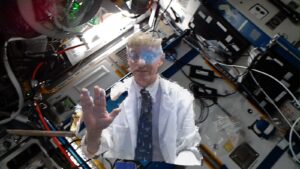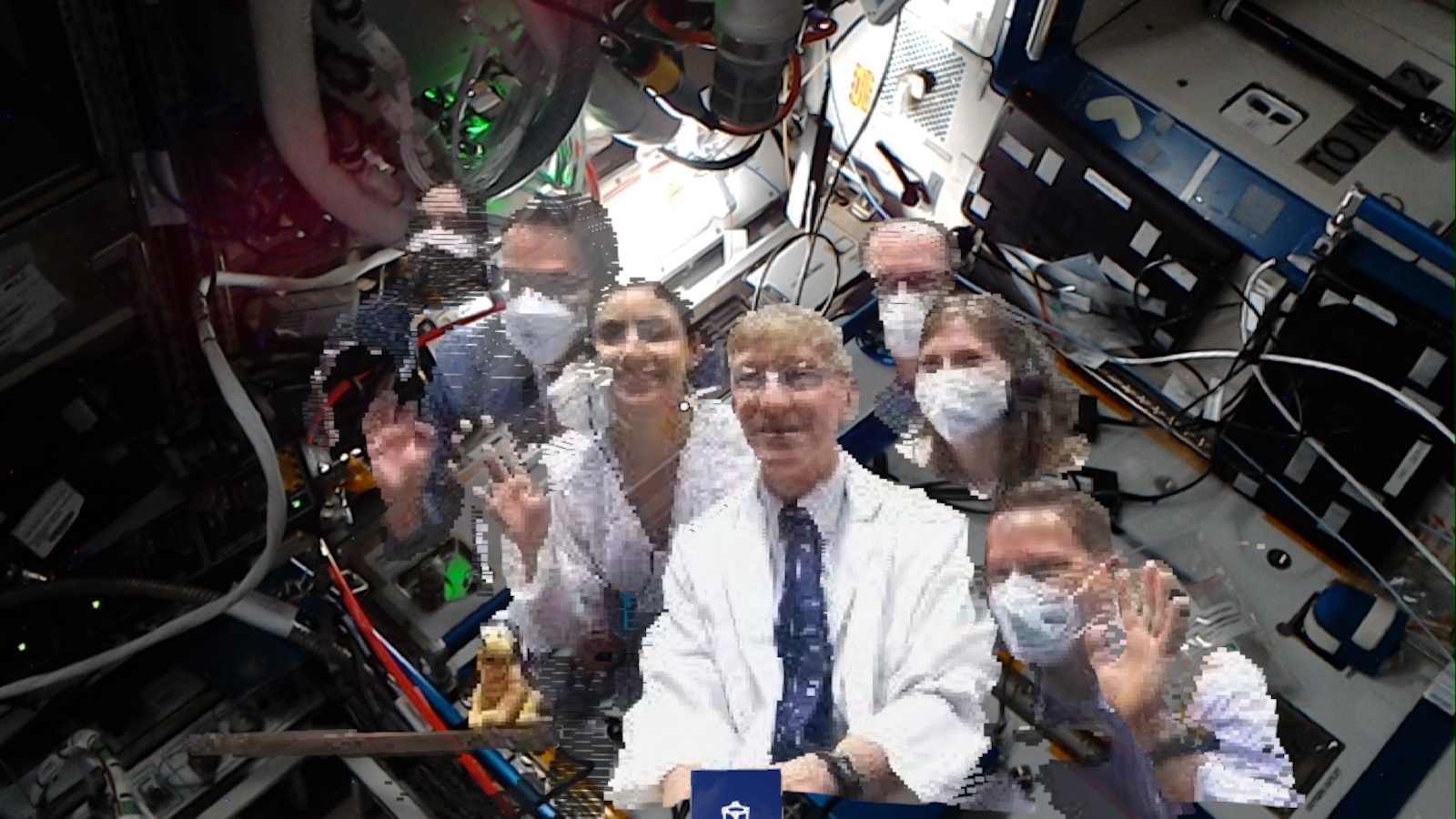
NASA and Microsoft use augmented reality to arrange ‘holoportation’ to the ISS

With the COVID-19 pandemic, the field of telemedicine has taken on the challenge of improving the way doctors can reach people. NASA has also been busy in the telemedicine space, always looking for fresh ways to keep their astronauts healthy when off-world. Telemedicine – for those who don’t know – is the remote diagnosis and treatment of patients with the help of telecommunications technology.
And it seems all that hard work has paid off. Back in October 2021, NASA flight surgeon Dr. Josef Schmid, AEXA Aerospace CEO Fernando De La Pena Llaca, and their teams were “holoported” from Earth into space. This was made possible by Microosft’s Hololens, a device that has seen extensive use on the space station. It’s the first time that the Hololens has been used in such a case.
The first holoport in space was a conversation between astronaut Thomas Pesquet and the team waiting back on Earth. Live imaging of the team was displayed in the middle of the International Space Station. The call also marked the first-ever handshake between someone on Earth and somebody out in space.
While Holoportation may sound like something straight out of Star Wars, it definitely isn’t. Holoportation reconstructs, compresses, and transmits people in real-time. Not literally. Just a 3D model of them. Obviously. When paired with a mixed reality display such as HoloLens, users can see, hear and interact with other 3D models, as if they were in the same place. So exactly what Meta is trying to pull off, but it actually has a useful function.
Holoportation future

NASA is hoping that this new form of communication will become commonplace in future missions. NASA has its sights set on using holoportation for two-way telecommunications, meaning that astronauts can also appear as a hologram back on Earth.
It’s useful for more than just standard medical check-ups – meetings with psychiatric doctors are possible too. It can even be used for entertainment. The families of astronauts will also be able to visit the Space Station virtually – keeping boredom at bay for the astronauts that are in space for months at a time.
It’s not just astronauts who will benefit. Their ships and environments, perhaps off-world, will too.
“Imagine you can bring the best instructor or the actual designer of a particularly complex technology right beside you wherever you might be working on it. Furthermore, we will combine augmented reality with haptics. You can work on the device together, much like two of the best surgeons working during an operation. This would put everyone at rest knowing the best team is working together on a critical piece of hardware,” Schmid said.
And this is just the beginning for this technology in space. As we continue to venture further into space, more and more importance will be placed upon holoportation technology. The main issue at the moment is the delay between Earth and its closest celestial neighbours. When visiting Mars, the delay between home and the Red Planet is about twenty minutes. That’s no way to have a conversation. If we ever find a solution to this problem, holoportation tech could well become a standard means of communication in space.
The post NASA and Microsoft use augmented reality to arrange ‘holoportation’ to the ISS appeared first on Stuff.
This content was originally published here.


